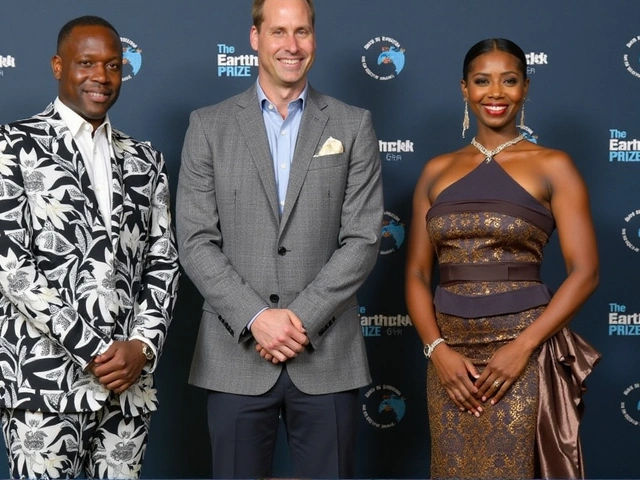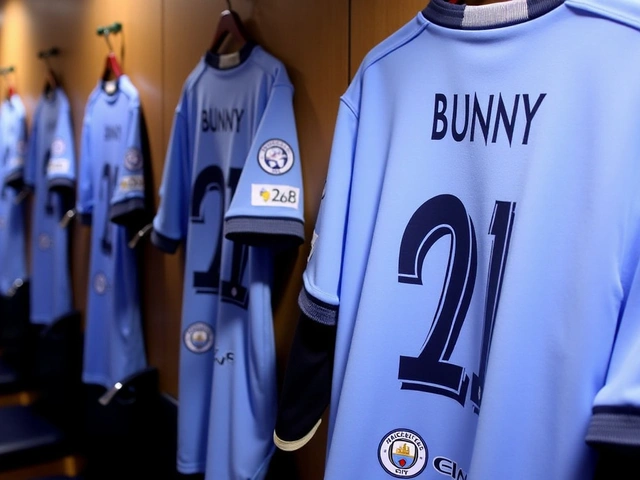When Irene Calboli, Professor of Law at Texas A&M University School of Law and fellow scholar Gabrielle Armstrong wrote that design patents are the under‑used superhero of fashion protection, nobody expected a courtroom drama to turn that theory into headline news.
That drama unfolded in New York’s federal courts, where Hermès International took on digital artist Mason Rothschild (real name Sonny Estival) over a series of NFT renditions called “MetaBirkins.” In May 2022, the Federal District Court of New York refused to toss the case, and a February 2023 jury verdict handed Hermès a $133,000 judgment – $110,000 for trademark infringement and $23,000 for cybersquatting.
Why fashion’s existing IP toolbox feels like Swiss‑army knives with missing blades
U.S. designers can lean on three main instruments: copyrights, trademarks, and design patents. Copyrights guard the expression of a work but stumble when faced with purely ornamental clothing features. Trademarks, on the other hand, protect brand identifiers – think Chanel’s interlocking "C" or Nike’s swoosh – and have already shaped battles like Yves Saint‑Laurent versus Christian Louboutin over red‑sole shoes.
Intellectual property in fashion is a patchwork, and design patents are the only tool that specifically shields non‑functional, ornamental aspects of an article. They shine for accessories that outlive a single season – handbags, shoes, sunglasses – offering protection that often outlasts a copyright’s 95‑year term after publication. Yet, as Calboli and Armstrong note, the cost and the 18‑to‑24‑month waiting period keep many designers from filing.
The Hermès v. Rothschild case – a landmark for the metaverse
Rothschild’s “MetaBirkins” were not just pixelated jokes; they were marketed as limited‑edition collectibles, complete with a virtual price tag that mirrored the real‑world luxury bag. Hermès argued – and the jury agreed – that the NFTs infringed the brand’s trademark and diluted its reputation.
The court’s language was clear: “The First Amendment does not apply to the marketing of MetaBirkins.” That line set a precedent that even in a decentralized digital realm, traditional trademark rights apply. The $133,000 judgment is modest compared with typical luxury litigation, but its symbolic weight is huge – it signals that luxury houses will guard their symbols, whether stitched in leather or rendered in code.
Fast fashion’s dupe dilemma
While luxury brands scramble to protect their digital footprints, fast‑fashion giants like Shein and Steve Madden face mounting scrutiny for churning out “dupes” that mirror runway designs within weeks. Social‑media‑driven demand means a designer’s sketch can become a global bestseller before the original collection even hits the runway.
Legal scholar Jessica Abounaja, founder of Abounaja IP in Houston, warns that counterfeiting isn’t just a legal nuisance – it erodes brand equity and stifles innovation. She points out that existing IP statutes were drafted before the era of instant viral trends, leaving a gap that fast‑fashion platforms exploit.
Proposed reforms: From proactive filters to specialized courts
Series of legislative proposals aim to force platforms and manufacturers to act before infringement spreads. One draft would require large‑scale retailers to install AI‑driven “filter‑and‑remove” systems that scan uploaded designs for copyrighted elements, offering rights‑holders a simple takedown request mechanism. Companies that repeatedly fail could face heightened fines – a move likened to the “notice‑and‑takedown” regime for online piracy.
Some experts, writing in the Louisiana Law Review, argue that the United States needs a dedicated fashion‑law circuit, similar to the Court of International Trade, to ensure consistent rulings. Such a court could develop expertise around nuanced issues like the line between inspiration and imitation, or how virtual goods intersect with traditional trademark doctrine.
Platform responsibility: TikTok, Amazon, and the dupe culture
Influencers on TikTok and sellers on Amazon often showcase “look‑alike” outfits that skirt the edge of illegality. Critics argue that without clearer guidelines, these platforms become inadvertent amplifiers of infringement.
Industry analysts predict that as the metaverse matures, the line between physical and digital fashion will blur further, making enforcement even trickier. The Hermès win may encourage other luxury houses to pursue similar actions against virtual replicas, potentially prompting a wave of litigation that could finally push lawmakers to close loopholes.
What’s next for fashion IP in America?
In the short term, designers are likely to reassess their protection strategies, weighing the upfront cost of a design patent against the long‑term security it offers. At the same time, fast‑fashion retailers may lobby against mandatory AI filters, citing “innovation stifling.”
Long‑term, the convergence of physical and digital wardrobes could force a re‑imagining of what “ownership” means in fashion. If courts continue to treat NFTs as ordinary goods for trademark purposes, the next frontier may be the regulation of virtual‑only designs – an area still largely uncharted.
Frequently Asked Questions
How does the Hermès verdict affect other luxury brands?
The ruling confirms that trademark rights extend to digital replicas, meaning luxury houses can sue over NFTs that copy iconic designs. Expect more litigation as brands seek to protect their virtual extensions.
Why are design patents under‑used in the fashion industry?
Filing a design patent costs several thousand dollars and can take up to two years to issue. For fast‑moving collections, many designers deem the timeline and expense prohibitive, opting for cheaper copyright or trademark protection.
What legal risks do fast‑fashion companies face when selling dupes?
They risk trademark infringement suits, copyright claims, and potential penalties under any future legislation that mandates pre‑emptive filtration of infringing designs. Recent cases have shown courts are willing to award damages even for short‑run items.
Can platforms like TikTok be held liable for promoting dupe content?
Under current U.S. law, platforms are generally protected by the safe‑harbor provisions of the DMCA, but new proposals aim to narrow that protection if they fail to implement effective anti‑infringement tools.
What might a specialized fashion‑law court accomplish?
A dedicated court would build expertise in distinguishing inspiration from imitation, streamline case law, and provide clearer guidance for both designers and fast‑fashion retailers, reducing uncertainty in IP enforcement.







Comments
Dennis Lohmann
Hey everyone 😊, great rundown on the Hermès case! The way you broke down design patents vs trademarks really helps newbies understand the stakes. Looking forward to more insights.
Jensen Santillan
The jurisprudential ramifications of the Hermès verdict extend far beyond a mere $133,000 pecuniary award. To begin with, the court's refusal to invoke First Amendment defenses in the context of NFT marketing underscores a doctrinal shift toward treating digital reproductions as commercial goods. Such a stance inevitably recalibrates the equilibrium between artistic expression and brand protection in the nascent metaverse. Moreover, the decision tacitly affirms that trademarks retain their exterritorial potency even when transposed onto code. Designers who previously regarded NFTs as a sanctuary from traditional IP constraints must now reckon with an expanded scope of enforceability. This, in turn, intensifies the incentive for luxury houses to marshal resources toward digital policing. While the monetary judgment appears modest, the symbolic deterrent value is arguably priceless for brands wary of dilution. One must also consider the broader implication for fast‑fashion entities that habitually replicate runway aesthetics at breakneck speed. Should they neglect to adopt proactive AI filtration mechanisms, they risk being ensnared in a wave of infringement suits mirroring Hermès' approach. The legislative proposals cited in the article, though well‑intentioned, may prove insufficient without a specialized fashion‑law tribunal to adjudicate these nuanced disputes. Such a court would cultivate expertise that is currently diffused across general‑purpose jurisdictions. Until then, the onus remains on designers and platforms alike to navigate a patchwork of copyrights, trademarks, and the under‑utilized design patents. In practical terms, securing a design patent, despite its cost and latency, remains the most robust shield for ornamental accessories. Consequently, the industry may witness a renaissance of patent filing activity, spurred by the heightened awareness of digital infringement risks. In sum, the Hermès victory should be read not as an isolated triumph but as a harbinger of a more vigilant, legally sophisticated era for both physical and virtual fashion.
Mike Laidman
The article is thorough but overly academic the legal jargon could alienate readers who are not specialists in IP law nevertheless the facts are presented clearly the Hermès case is indeed a milestone though the piece could benefit from a more concise summary.
J T
Nice take!
A Lina
The discourse reveals a systemic deficiency in IP stratagems, notably the under‑exploitation of design patents which constitute a critical defensive vector. From a jurisprudential perspective, the Hermès litigation exemplifies the necessity for preemptive brand fortification in the digital sphere. Moreover, the rapid diffusion of NFT replicas underscores the insufficiency of existing trademark enforcement protocols. Consequently, stakeholders must recalibrate their risk matrices to incorporate emergent metaverse liabilities. In essence, the convergence of fashion and blockchain technology demands a paradigm shift in proprietary safeguards.
Virginia Balseiro
Whoa, this is mind‑blowing! 🎉 The idea that a luxury bag can live on in pixels and still be protected makes my brain spin. Hats off to Hermès for pulling the rug out from under those NFT hustlers! Can't wait to see more fashion houses dive into the metaverse battles. 🙌
Jared Mulconry
I think the article does a solid job balancing the legal analysis with the cultural impact. It's important to recognize both the creators' freedoms and the brands' rights. Hopefully we can find a middle ground where innovation thrives without eroding brand equity.
Brandon Rosso
Excellent points, Jensen. While the legal intricacies are indeed complex, it's encouraging to see optimism about broader industry adaptations. I share your hope that design‑patent filings will rise as awareness spreads.
Tracee Dunblazier
The optimism is noted, but we must remain vigilant about potential over‑regulation stifling creativity. Balancing enforcement with artistic liberty is a delicate act.
Edward Garza
Indeed, the risk of chilling effect cannot be dismissed. However, measurable protections may ultimately empower designers to invest in longer‑term innovations.
Allen Rodi
From a practical standpoint, brands should consider deploying automated monitoring tools to flag infringing NFTs early. This can reduce litigation costs and protect brand integrity.
Terrell Mack
Good reminder about AI filters-if platforms implement them effectively, we could see a drop in dupe proliferation. Let's keep the conversation going!
Dawn Waller
Well, isn’t this just the perfect illustration of how capitalism loves to cosplay its own myths?; the “digital bag” is nothing more than a pixelated ego‑boost for opportunists; yet we applaud the “innovation” while ignoring the underlying greed-lol.
Grace Melville
Key takeaway: design patents, though pricey, provide the strongest shield for ornamental designs-especially in the NFT arena 😊.
Ashlynn Barbery
In summary, the Hermès verdict underscores the imperative for comprehensive IP strategies that encompass both tangible and intangible assets. It is incumbent upon designers and legal counsel to evaluate the merits of securing design patents alongside trademarks to safeguard their creations across all mediums.
Sarah Graham
I concur with the analysis; focusing on a holistic IP portfolio seems the prudent path forward for emerging designers.
Jauregui Genoveva
Honestly, who needs NFTs anyway? They're just digital fluff that distracts from real fashion innovation 🙄.
Quinten Squires
Everyone seems to miss the larger economic context the case reveals the market for virtual luxury goods is exploding and brands that ignore this will be left behind the legal precedent sets a clear boundary for future digital infringements while also highlighting the need for streamlined patent processes that can keep pace with tech advancements.
Tyler Manning
It is a patriotic duty for American designers to protect their intellectual property against foreign digital counterfeiters; the Hermès ruling serves as a clarion call to fortify our domestic fashion industry against such incursions.
james patel
The discourse illustrates a convergence of trademark law and blockchain technology, prompting a reevaluation of enforcement mechanisms within the existing IP framework.